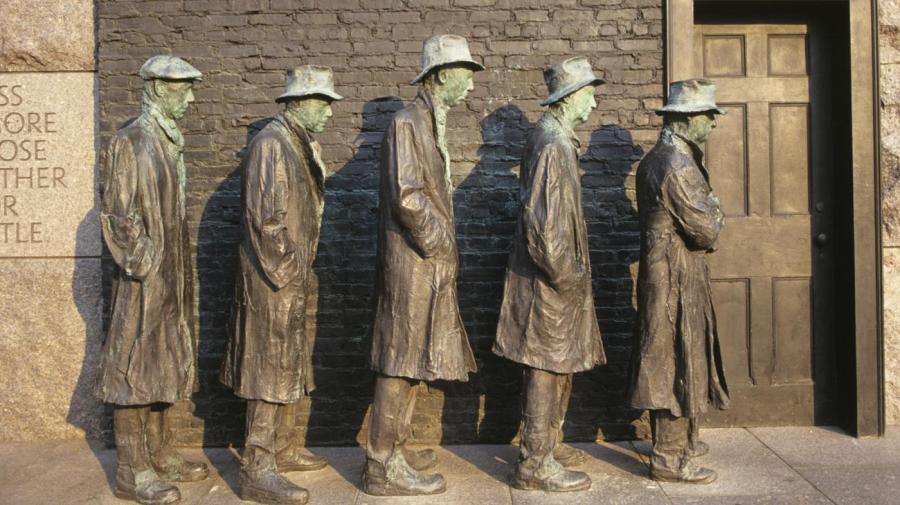What Were Some Solutions to the Great Depression?

President Franklin Delano Roosevelt initiated several acts that fixed the bank problems and helped the American people obtain jobs and relief during the Great Depression, according to PBS’s The American Experience. These acts included the Emergency Banking Bill of 1933, the Glass-Steagall Act (FDIC), the Civil Conservation Corps, the Works Progress Administration, the Home Owners’ Loan Corporation, the National Industrial Recovery Act and the Federal Emergency Relief Administration.
President Roosevelt took an active approach to solving the nation’s problems by calling in all the experts and theorists he could to help brainstorm solutions to the Great Depression, PBS reports. His predecessor, Herbert Hoover, had let the Depression run its course, believing it was not the government’s job to get involved.
The Emergency Banking Bill of 1933 stabilized the banking system. The Glass-Steagall Act created the FDIC, which gave bank deposits the protection of federal insurance. The Civil Conservation Corps put young men ages 17 to 23 to work in forests and national parks. They earned $30 a month, much of which was sent back to assist their families, according to the Authentic History Center.
The Works Progress Administration employed more than 8.5 million men to build roads, bridges, public buildings and parks. This program improved public property and offered jobs to those who desperately needed them. The National Industrial Recovery Act helped to regulate hours worked and to ban child labor. The Federal Emergency Relief Administration delivered money to states to create work relief programs.
The Agricultural Adjustment Act helped the farmers struggling in the Dust Bowl by paying them to reduce their crops. It also offered loans for farmers facing bankruptcy. Finally, the Home Owners’ Loan Corporation helped people facing foreclosure keep their homes.





